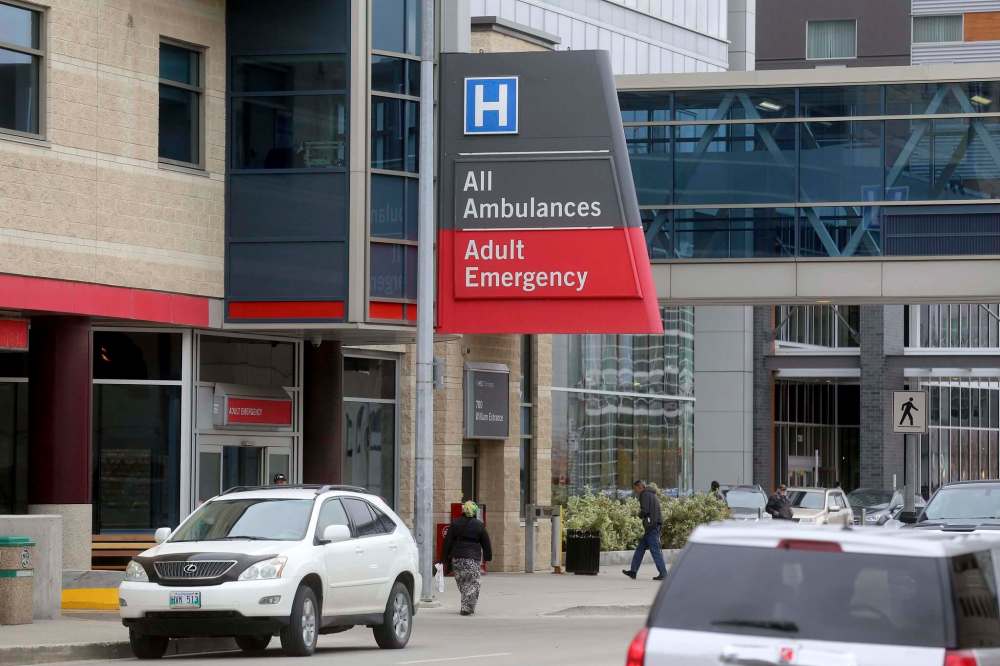HSC admin sends the wrong message
Read this article for free:
or
Already have an account? Log in here »
To continue reading, please subscribe:
Monthly Digital Subscription
$0 for the first 4 weeks*
- Enjoy unlimited reading on winnipegfreepress.com
- Read the E-Edition, our digital replica newspaper
- Access News Break, our award-winning app
- Play interactive puzzles
*No charge for 4 weeks then price increases to the regular rate of $19.00 plus GST every four weeks. Offer available to new and qualified returning subscribers only. Cancel any time.
Monthly Digital Subscription
$4.75/week*
- Enjoy unlimited reading on winnipegfreepress.com
- Read the E-Edition, our digital replica newspaper
- Access News Break, our award-winning app
- Play interactive puzzles
*Billed as $19 plus GST every four weeks. Cancel any time.
To continue reading, please subscribe:
Add Free Press access to your Brandon Sun subscription for only an additional
$1 for the first 4 weeks*
*Your next subscription payment will increase by $1.00 and you will be charged $16.99 plus GST for four weeks. After four weeks, your payment will increase to $23.99 plus GST every four weeks.
Read unlimited articles for free today:
or
Already have an account? Log in here »
Hey there, time traveller!
This article was published 11/10/2018 (2619 days ago), so information in it may no longer be current.
As bureaucratic reactions go, this one might charitably be described as misdirected.
As the conversation, both locally and nationally, rages on about the growing epidemic of methamphetamine addiction, much discussion lately has focused on how law enforcement and the health-care system are inadequately equipped to deal with a wave of associated problems that become more overwhelming with each passing week.
In this context, a video surfaced this week of a violent altercation at Winnipeg’s Health Sciences Centre (HSC), involving an assault on a nurse by a 21-year-old man who is presumed to have been under the influence of meth. The security footage, recorded on Aug. 31, shows the man repeatedly striking the nurse before being subdued by four security guards who, fortunately, happened to be just around the corner when the assault began.

The video, published online by CBC on Wednesday, seems to underscore concerns raised by unions representing health-care workers and security guards about the increased risk of violence faced by hospital staff. It is believed that the footage was leaked to the media by someone who works at HSC.
Given this graphic illustration of the concerns being raised about safety in health-care facilities, one would expect a quick reaction by HSC management. And there was, in the form of an internal memo to staff from HSC’s interim CEO suggesting the hospital is seeking to identify and discipline the individual who leaked the footage.
Citing the video’s release as “inappropriate” and a “serious breach of personal health information,” Ronan Segrave’s memo — which was obtained by the Free Press — states that HSC is “currently conducting an investigation into the matter.”
It must come as a great comfort to HSC staff to know hospital administrators are capable of swift and decisive action. It would probably, however, be more reassuring if such action focused on staff-safety issues rather than locating and disciplining a staffer who, presumably concerned about inadequate safety measures in the face of a rising threat, felt it necessary to leak a video that illustrates the point.
The head of the Manitoba Nurses Union put it bluntly: “It is a shame that nurses have to fear for their lives when they go into work.”
There is no reason to doubt that HSC administration takes seriously the safety of its workers and is doing what it can to address the perils created by the increasing presence of meth-impaired patients. Nor is there reason to doubt that the Winnipeg Regional Health Authority (WRHA) is concerned about the dangers associated with meth-induced psychosis, despite its interim president and CEO’s cautioning against jumping to conclusions that the increase in violent attacks in ERs is directly linked to meth, and his contention that no evidence supports the assertion that the assailant in the HSC video was high on meth.
No private patient information is revealed in the grainy video, in which the unidentified assailant is shown only from behind. What is clearly discernible in the 18-second clip, and very much of public interest, is the real danger faced by health-care workers in the current environment.
The issue here is the tone-deafness of the message. As important as it is to safeguard the personal information of patients and protect the hospital’s image, this seems to be a circumstance in which the first and most crucial statement should have been to assure hospital staff that immediate and effective action is being taken by HSC and the WRHA to protect their workers from a fast-growing and undeniably terrifying on-the-job danger.
History
Updated on Thursday, October 11, 2018 7:06 PM CDT: Fixes posting date.








